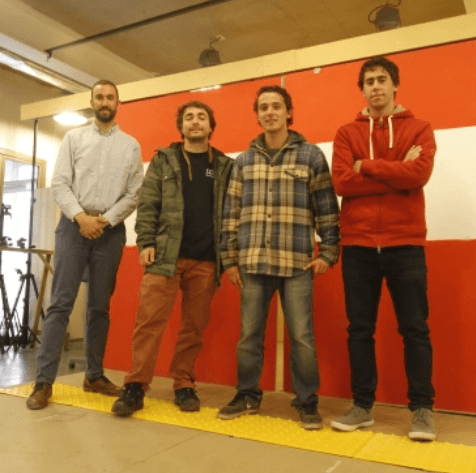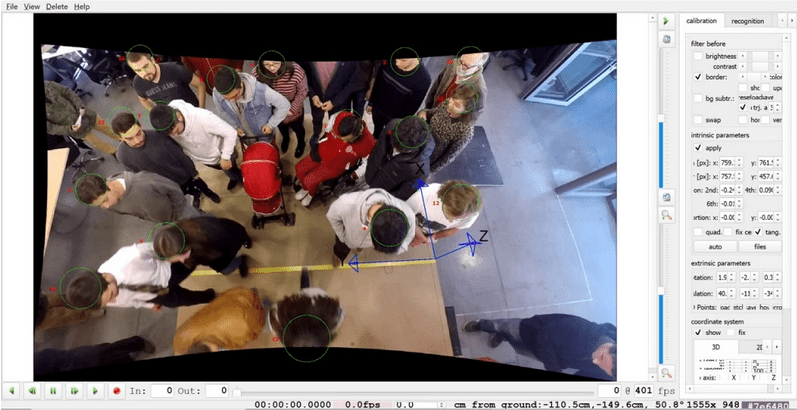Laboratory

The studies and projects carried out by the Observatory have an
experimental approach based on observation and modelling.
The Observatory use the Human Dynamics Laboratory (LDH) of the Universidad de los Andes. This laboratory is about 80 m2, and is a unit within the Engineering Research Center. Currently in the LDH there is a mock-up of a public transport vehicle to simulate the boarding and alighting of passengers, who are recorded by video cameras. Those who
participate in the experiments can be students or users of public transport systems, representing passengers with disabilities or reduced mobility.
The LDH is inspired by the Pedestrian Accessibility Movement Environment Laboratory (PAMELA) and the Person Environment Activity Research Laboratory (PEARL), both from University College London. These are 1:1 scale multisensorial environment for testing people’s interactions with their surroundings.
At the LDH we use LEGION pedestrian simulation software applied mainly to public transport and its surroundings. The Fruin Service Level is used as an indicator to measure pedestrian congestion. This software is based on pedestrian dissatisfaction, which is a function of the frustration (speed), discomfort (density) and inconvenience (distance) of pedestrians. It does not use grids or other virtual constraints.
In addition, at the LDH we use Petrack software to detect pedestrians and their paths, which is developed by the Pedestrian Dynamics – Empiricism IAS-7: Civil Safety Research, Institute of Advanced Simulation (Forschungszentrum Jülich). The LDH also includes the development of new applications and models to transform this space into a multisensory laboratory that allows studying the movement, dynamics and behaviour of pedestrians, combining the logic of Engineering, Urbanism, Psychology, Kinesiology and Occupational Therapy, among others.

Documents and files:
- Research topics about accessibility at the LDH (download in Spanish).
- Protocol and calibrated Petrack to be used at the LDH (download in Spanish).
- Protocol and sequence to do experiments at the LDH (download in Spanish).